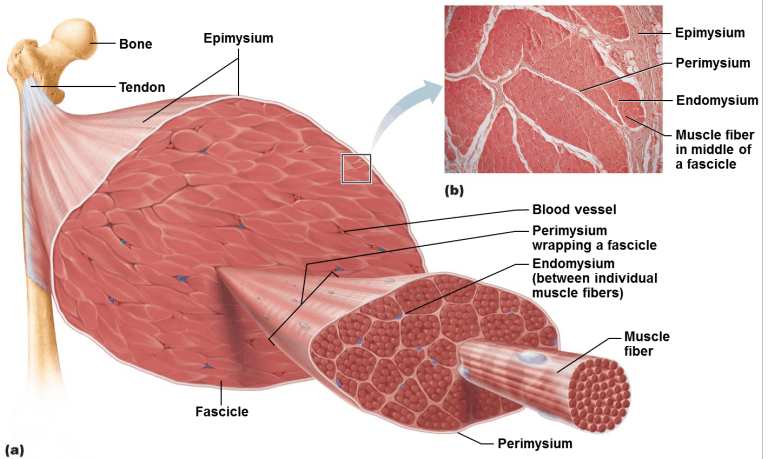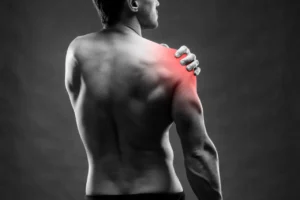What Is Delayed Onset Muscle Soreness (DOMS) & How Can Nutritional Intervention Reduce It?

Every bead of sweat in your gym sessions is your battlefield, it lifts your spirit and your body is shown to progress. Lifting heavy and feeling tired keeps you stronger today, and makes you an achiever tomorrow. You met your better version with a more focused, motivated, and energetic you.
Your endurance means combined acceptance of your ability to tolerate pain and pursue your goals. Accepting temporary pains will bring eternal pride. It’s your glory, made of courage, perseverance, and sacrifice.
If you push harder today till you feel pain and intense soreness in your muscles, you start feeling good, so we better say “Pain is good once you achieve a desired physique”. And..your solid strength training routine keeps your muscles getting stronger.
It’s a deletion to say that….”Champions are those who refuse to give up.”
It is incumbent upon us to take the reference of eight-times Mr Olympia titled Ronnie Coleman “The King of Bodybuilding”, once he said “There’s no secret formula. I lift heavy, work hard, and aim to be the best.”
Every push of your perceived limits and beat them through the act of repeated challenge – you shall gain. And shall pay a heavy price for your sweat, pain, and you become tired. Success is accepting pain through a series of events.
No pain resulting in no gain. If your body isn’t prepared, you ought to be prepared to fail again on the next day. So, wake up, the clock is ticking. Would you like to become the person you want to be? Read this very important discussion that gives you really hard success.
Have you ever crushed your first workout sessions in your new training phase or made a return to a workout routine after a break, and then woke up the next day, you had some time off from the workout after you felt the pain?
You know that feeling when you wake up the morning after a killer workout and every single muscle in your body is screaming at you?

Yep, that’s what we call delayed onset muscle soreness, or DOMS for short. It’s known as ‘muscle fever’, it’s your muscle soreness, muscle starts aching (myalgia) for a few days after a workout, feel pain in the muscles, these commonly occur after strenuous or eccentric exercises.
Is DOMS Normal And How Do You Manage It?
You were likely wondering about the source of your intense pain, weren’t you? It’s your body’s way of telling you that you really worked those muscles hard – and that’s a good thing!
See, when you push yourself harder in the gym and lift those heavy weights, you’re actually causing little tears in your large multinucleated cells in the muscles and start feeling stiffness. After that, during resting time, your body then rushes in to start repairing breakdowns, and this could lead to your muscles getting bigger and stronger day after day.
Your muscle repair process leads to insane soreness for the next day. That’s how you build muscle, and you will get that shredded physique if you eat proper nutrition after that phase.

Exercise-induced muscle damage (EIMD) is very common after your eccentric exercises such as cycling, weight pulling, wrestling, jogging, running, high-impact step aerobics, rope jumping, swimming, cycling, high-intensity walking, etc. give your muscle pain, temporary muscle damage (soreness), low range of motion (ROM), tight feelings, muscle tissue destruction, inflammation, and lower muscle function.
These unfavorable consequences may trigger pain in muscles, and disrupt subsequent time-to-task athletic performance failure and lower self-paced endurance or pace of training quality, especially in individuals who have less recovery time for the next bout or training sessions.
The way we see it, if you’re not feeling muscle soreness after your strenuous exercise sessions, you probably didn’t work hard enough.
Lifting heavy and feeling fatigued after every heavy workout session keeps you build better muscle and feel stronger tomorrow. Your endurance and ability to accept and push through that pain make you a real champion and proclaim your extravagant glory.
When And How DOMS Occur?

Let me clear you, the real workout starts when you want to give up. Your noticeable muscle gains occur through forceful contraction during the time of your very last few reps. So, push harder, refuse to quit, and enjoy your fitness most. That’s where the magic happens, my friend. That’s where you’ll find the gains, the strength, the pride.
There’s a tried-and-true formula here – lift heavy, work your butt off, and aim to achieve your best version. This pain is temporary, success in building better muscle is permanent, so being well will never be denied.
You have been often tried and ready to try again, which makes you a real champion. You have to push your perceived limits, the limits you thought were as far as you could go. It’s not easy, but the payoff is so worth it.
Understanding DOMS: How Nutrition and Supplements Can Aid Recovery After Exercise!

The interest of Delayed Onset Muscle Soreness (DOMS) has intrigued sports scientists for years. There have been six different hypothesised theories proposed for the contribution to DOMS, such as lactic acid, muscle tightening, inflamed tissue, inflammation, efflux of muscle enzymes theories, and structural muscle damage, alongside, nitric oxides decreased muscle force generation, perturbed calcium homeostasis, inflammatory responses, free radicals, all these causing DOMS. Understanding the mechanisms behind DOMS is crucial for athletes and fitness enthusiasts looking to optimise their recovery process.
When you engage in strenuous exercise, especially activities that involve eccentric muscle contractions, resulting in morphological damage induced by eccentric contractions, and you start feeling DOMS, this could occur around 24-48 hours after the finish of your physical activity or post-exercise.
Chemokines are secreted by cells after muscle damage, this could trigger inflammatory cells (such as neutrophil and macrophages) to become more active.
On this, your muscles become swollen, tender, and weaker strength output, these could greatly influence to lower your exercise performance.
But, there is hope, good nutrition can often alleviate these DOMS symptoms and speed up your recovery process the day after your session.
Currently, different techniques are applied including Muscle Relaxation physiotherapy, Cryotherapy, different therapeutic exercises, and muscle stretching have been used to involve lower muscle stiffness, deep relaxation, and systematic tensing in various muscle groups to reduce the effects of EIMD.
What can I add to my daily meals to improve my DOMS?

Likewise, different nutritional and supplementation including amino acids, proteins, and other herbal extracts thought to be intended to control EIMD-related outcomes and are widely used in sports industries.
Nutrition Intervention for DOMS:
Recent studies have suggested the role of nutrition to combat the symptoms of Exercise-Induced Muscle Damage (EIMD) and reducing DOMS. Adding specific nutrients (caffeine, omega-3, vitamin D3, taurine, polyphenols) into your diet before and after exercise can be effective in minimising muscle soreness and improving recovery.
Protein and Other Essential Nutrients:
Your daily diet should be a good amount of high-protein foods: including, chicken, beef, pork, turkey, dairy products, different seeds, etc, these are excellent sources to support your muscle repair cycle.
Aim to take high-quality protein in your diet to support muscle repair, your target intake of protein should be 1.2-1.8g per kilogram of body weight, for example, between 96g-144g for an 80kg body weight.
Additionally, taking whole grains, fruits, vegetables, amino acids reach supplements and omega-3 fatty acids can also aid to reduce muscle inflammation and support quicker muscle recovery.
Caffeine: A Surprising Ability!
Caffeine, known for its central nervous system stimulating effects, and the best source of non-carbohydrate energy sparging intensity during exercise, muscle glycogen enhancer for endurance training by stimulating fat oxidation, has also been known to aid in relieving DOMS symptoms.
Studies have shown that caffeine intake before and after exercise can significantly decrease muscle soreness. Caffeine is very effective to block adenosine receptors in the central nervous system, and it may help alleviate the discomfort associated with DOMS. (CNS, Hurley et al., 2013; Maridakis et al., 2007).
A recent meta-analysis demonstrated a group of people (9 people) who took caffeine (5 mg/ per body weight) just 1 hr before and 24 hr after exercise for consecutive 4 days, and they had reduced DOMS effects within 2-3days after exercise compared to the control group (Hurley et al., 2013).
Omega-3 Fatty Acids: Nature’s Anti-Inflammatory!
Omega-3 fatty acids known as alpha-linoleic acid (ALA), found in fish oils and seeds like flaxseed oil, containing n-3 polyunsaturated fatty acids (PUFAs) have been identified for their anti-inflammatory properties. It boosts EPA and DHA levels, which effectively reduce the synthesis of prostaglandins, leukotriene, prostaglandin, and thromboxanes are closely linked to inflammatory factors.
Phillips et al. (2003) revealed a report, that claimed – ‘taking Omega-3s can help reduce exercise-induced inflammation during exercise and alleviate DOMS. (Jouris et al., 2011; Tartibian et al., 2009).
Other studies have shown positive outcomes on DOMS effects when people ingest Omega-3 fatty acids into their diet, showcasing a reduction in muscle soreness and pro-inflammatory markers. It has shown that 45 healthy males start taking 1.8 g of omega-3 fatty acid following eccentric exercise, and they have effectively lowered their pro-inflammatory cytokines (such as IL-1, IL-6, PGE2, and TNF-α) Tartibian et al. (2011).
Taurine:
Taurine, is a 2-aminoethanesulfonic acid abundantly found across mammalian tissues. Taurine stimulates skeletal muscle force production, reduces muscle soreness and increases muscle strength because it regulates different mechanisms in gene expression and proteins involved in mitochondrial and respiratory metabolic processes.
It helps stabilise cell membranes, acts as an antioxidant, regulates osmotic balance (osmoregulation), and even plays a role in maintaining calcium transport in our gut, kidneys, and bone (Schaffer et al., 2010).
Some recent studies have suggested that taurine may also have an impact in reducing Delayed Onset Muscle Soreness (DOMS), the muscle pain and stiffness that often occur after intense workouts.
One study found that a daily intake of 50 mg of taurine for 21 days resulted in a noticeable reduction in DOMS and oxidative stress markers in healthy males (n=21) after performing eccentric exercises.
Another study showed that when taurine (2.0 g) was combined with branched-chain amino acids (BCAA, 3.2 g) 3 times a day for repeated 18 days among 36 healthy males; it led to a significant drop in DOMS and elevated oxidative stress in comparison to a control group (Ra et al., 2013).
This suggests that both taurine on its own and when combined with BCAA might be helpful in reducing the muscle soreness that follows high-force eccentric exercises. It is believed that taurine’s ability to decrease oxidative stress might be the key to its effectiveness.
Polyphenol:
A bioactive substance of phytochemicals found in edible plants, it is known for its antioxidant and anti-inflammatory properties. Phytochemical components of polyphenol, such as anthocyanins and flavonoids, have been shown to have strong antioxidant and anti-inflammatory effects (Kuehl et al., 2010).
Studies have uniformly indicated that a polyphenol may help reduce DOMS through its action to maintain the structural integrity of a cell’s plasma membrane and by neutralising free radicals through suppression of peroxyl radical activation (Jówko et al., 2011).
Researchers have looked at various sources of polyphenol, such as pomegranates, cherries, and blueberries, and their effect on DOMS. For instance, the intake of ellagitannins extracted (have gallic acid and hexahydroxydiphenic acid) from pomegranate showed a significant reduction in DOMS after eccentric exercise.
Similarly, cherry juice (rich in antioxidants) has been found to effectively reduce DOMS following bouts of exercise. These differing outcomes may be due to various factors, including the specific type of exercise, the dosage used, and the timing of ingestion.
So these natural compounds aid in muscle recovery, and most fitness enthusiasts looking for effective ways to ease post-workout discomfort. If you take taurine and BCAA the benefits of polyphenol-rich foods, start to support your bodies in the post-exercise phase.
Turmeric – The active ingredient of curcumin, helps with inflammation and muscle soreness.
Vitamin D3 – Plays a vital role in immune system regulation and muscle repair process.
So, the next time, if you’re ready for an intense workout session, consider the large benefits of including taurine, BCAA, or polyphenol-rich foods for a smoother recovery experience.
So, for amino acid supplements, try Ultimate BCAA Powder (Electric Candy) at a discounted price.
Cheers to happy strong muscles and a healthier you!
